



Shamus
gamer level 7
16435 xp
16435 xp
followers
96
96
Use my invite URL to register (this will give me kudos)
https://boardgaming.com/register/?invited_by=shamus
profile badges




recent achievements

Professional Advisor
Submit 25 game tips, strategies, or house rules and receive a total of 1200 positive ratings.
Submit 25 game tips, strategies, or house rules and receive a total of 1200 positive ratings.

Senior
Earn Professor XP to level up by completing Professor Quests!
Earn Professor XP to level up by completing Professor Quests!

Mask of Agamemnon
Explore select games by completing a series of exploration actions. learn more »
Explore select games by completing a series of exploration actions. learn more »

Explorer - Level 5
Earn Explorer XP to level up by completing Explorer Quests!
Earn Explorer XP to level up by completing Explorer Quests!
Player Stats
Critic (lvl 4)
2595 xp
2595 xp
Explorer (lvl 5)
3538 xp
3538 xp
Professor (lvl 4)
1517 xp
1517 xp
Reporter (lvl 2)
528 xp
528 xp
About Me
There's a lot of games out there that I like to play. Everything from strategy to puzzle to the abstract. I am more of a cooperative gamer than a competitive gamer; I generally don't like to screw over other players if I can help it. Recently I have gained the reputation for being a wolf in sheep's clothing; i.e. I play nice, don't offer a threat, but towards the end of a game, I usually surprise everyone and go for the win. Honestly, I don't care if I win or lose a game, and to that end I don't really have a killer instinct, but I love to present a challenge, so I guess that's what drives me.
Games that I like:
Dominion
Arkham Horror
Talisman
Dungeonquest
Red November
Resident Evil
Mage Knight
Dominant Species
Lords of Vegas
Quarriors
Once Upon A Time
Kill Dr. Lucky
Letters From White Chapel
Tomb

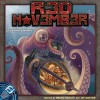


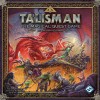







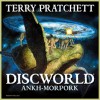



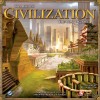


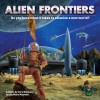



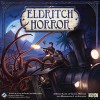


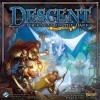
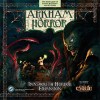






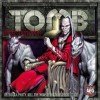


![Go to the Level 7 [escape] page Go to the Level 7 [escape] page](https://boardgaming.com/wp-content/uploads/2012/08/Level-7-escape-100x100.jpg)
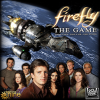
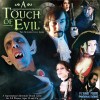

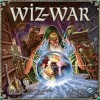


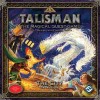


















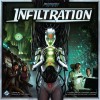





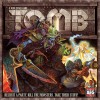

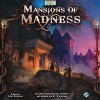

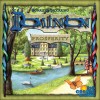


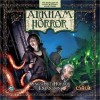





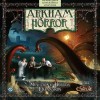


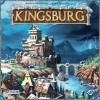











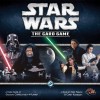
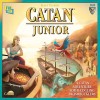


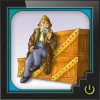
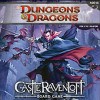









Once Upon a Time: The Storytelling Card Game
I was first introduced to this game by an author at a convention I attended about 6 years ago. It was highly recommended as a creative storytelling game, and I was sold on it when I heard the way it was described. I wound up getting the game a couple of years ago and have since enjoyed the game for its freeform mechanics and creativity.
So how does this game work? It’s actually very simple. The game consists of a wide variety of cards. There are two types: The “Once Upon A Time” cards (also called “storytelling cards”) which drive the main portion of the game, and “Happy Ever After” cards (also called “ending cards”) which represent how the story is going to end. Each player gets one Happy Ever After card which they can only play after all of the Once Upon A Time cards have been played from their hand, and is in effect the culmination of the story. To start the game, each player is first dealt a Happy Ever After card, then a number of Once Upon A Time cards are dealt to each player, the number of which depends upon how many people are actually playing the game (2 players – 10 cards each, 3 players – 8 cards, 4 players – 7 cards, 5 players – 6 cards, 6 or more – 5 cards).
While the Happy Ever After cards are just a single sentence narrative (“The monster was destroyed and the farm was safe once more”, “And she was reunited with her family”, etc.), the Once Upon A Time cards actually are quite varied and have different types. There are 5 different basic card types: Characters, Items, Places, Aspects, and Events.
Characters are the people and creatures that the story will have, and can range from a princess to a wolf and many other tiers between.
Items are object in the story that are found or used, such as a boat, a crown, a sword, etc.
Places are the locations that the characters in the story will visit or hear about, such as a forest or a city.
Aspects are the adjectives of the story, and describe how certain characters or locations are fleshed out, e.g. Angry as in “Angry Giant” or Diseased as in “Diseased Beggar”.
Events are things that happen during the story, such as a fateful reunion, a fight, or even something as basic as time passes.
Along with these 5 basic types of cards are also specialty cards called Interrupt cards. Interrupts fall into the 5 basic types of cards, but have no definitive subject of those types; when played, the one who played the card can simply choose to define what the card is based on the card type. For example, if an Item Interrupt card is played, the player who played it can simply define it as a Goblet or a Magic Wand.
After the cards have been dealt out to each player, the starting Storyteller is selected. The instruction booklet lists several different methods, but once a starting Storyteller has been selected, play begins. The Storyteller may start out the story any way he or she wishes (though traditionally it usually begins “Once Upon a Time…”), and is not restricted by the cards in their hand. However, the object of the game is to play all of the Once Upon A Time cards from a player’s hand in order to get to the finale of playing the Happy Ever After card. To do that, whenever the Storyteller mentions something in their story that corresponds to one of the cards in their hand, they can play that card to remove it from their hand. Therefore, it is in the Storyteller’s advantage to steer the story in a way that somehow ties together all the elements in their hand.
During the course of the game, the Storyteller will change from person to person. The way this happens is through interrupts. If the Storyteller mentions something in the story that corresponds with one of another player’s cards, that player can play their card from their hand and become the new Storyteller (therefore interrupting the progress of the story), picking up the story where the last Storyteller left off. It should be noted that the related subject doesn’t need to match entirely, so long as it is closely related; if the Storyteller mentions that two characters disagree on something, a player could play the Argument Event card, even though the word “Argument” was never directly mentioned. A player may also play an Interrupt card after the Storyteller has just played a card that matches the card type that the Interrupt card is. For example, if the Storyteller plays an Angry Aspect card, and a player has an Aspect Interrupt, they can play the card and name their own Aspect, such as Devious. They then become the new Storyteller and continue the story. A player may also become the new Storyteller if the current Storyteller declares “Pass” during their story, usually indicating that they have no good way to continue the story or can’t think of anything at the moment.
Once all the Once Upon A Time cards are gone from a Storyteller’s hand, they can then resolve the story with their Happy Ever After card, ending the game. The Storyteller can’t introduce any new story elements before the card is played, meaning that the story should be resolved within one or two sentences of playing the last Once Upon A Time card in their hand. The rules state that the story should be ended in a sensible and satisfying conclusion, and that is left up to the interpretation of all the rest of the players. If the ending does not make sense or end satisfyingly, the Storyteller must draw a new Happy Ever After card and a new Once Upon A Time card, while play passes to the person on the left. Since this aspect of the game is very subjective, the instruction booklet recommends that this rule is not enforced too strictly; this game is meant to be a fun and creative game, and not a cutthroat game.
Once Upon A Time is a game that is very well suited for those with a creative mindset and who love telling and listening to stories, as well as those players who enjoy a cooperative aspect to games. Though this game may seem to be something of a competitive game at the outset, it’s more about crafting something together than it is about winning the game itself. Hardcore gamers probably wouldn’t enjoy this game very much, as it doesn’t yield the same sensation of victory as playing and winning difficult games does, but this game is definitely good for the casual gamer and the family gamer. It is a pure card game, but the cards only play a backstory to the overall game itself, a guiding influence, if you will. Additional blank cards are also included in the game to write your own elements. There is also an expansion called Once Upon A Time: Dark Tales, for those who enjoy a little bit more edge to the ending of the stories. In a lot of ways, you never quite know where the story will take you in this game, and that in itself makes it entertaining.